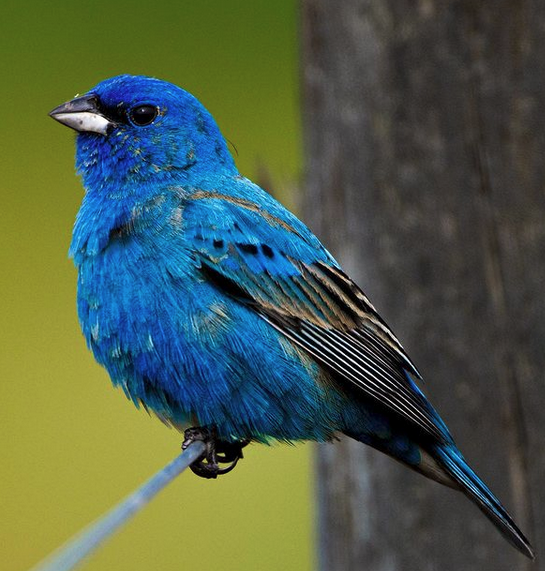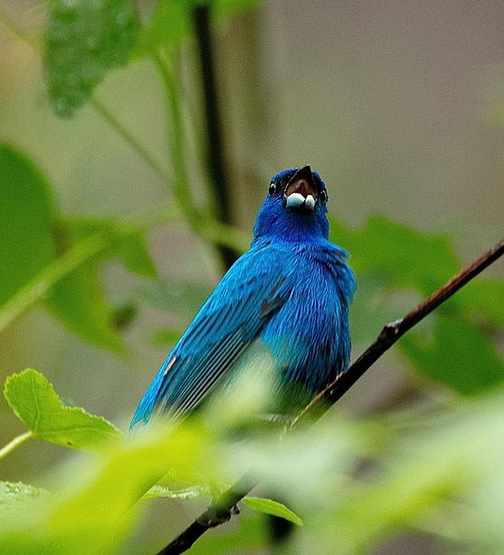The soundtrack of springtime in North Carolina is set by an Indigo Buntings cheerful song echoing over sun baked grassy fields.
Male Indigo Buntings are persistent singers. Even on the hottest of days, they can be spotted warbling their sweet, double-noted song from treetops, telephone wires, and other elevated perches with a commanding view.

I photographed this handsome male while on a recent birding trip to Yates Mill Park and Mid Pines rd.
What struck me about him was that he was silent lol! There were at least 4 other males in the area singing so perhaps he was just trying to keep a low profile while moving through the other’s territory.
Speaking of territory, the vast grass fields and swamp area at Mid Pines Rd. and at Yates Mill Park are the perfect habitats favored by breeding Indigo Buntings.
They typically nest in dense shrubs or in the crook of small trees no more than 3ft off of the ground along the wood line at the edges of an open area. Most of the time it’s the males that you’ll spot first as they will choose a tall tree to sing near the nest site. Females are more secretive and tend to keep to the cover of the shrubs.

Indigo Buntings are found in all 100 of North Carolina’s counties from April through late October. Happily this is a songbird species who’s range is growing so there’s plenty of places to find them from the mountains to the coast. If you haven’t seen one yet this year then there is still plenty of time to go see one!
Photos by @sally_siko of @birdwatching_nc on the full frame beast of an SLR, the mighty @canonusa
#5Ds


